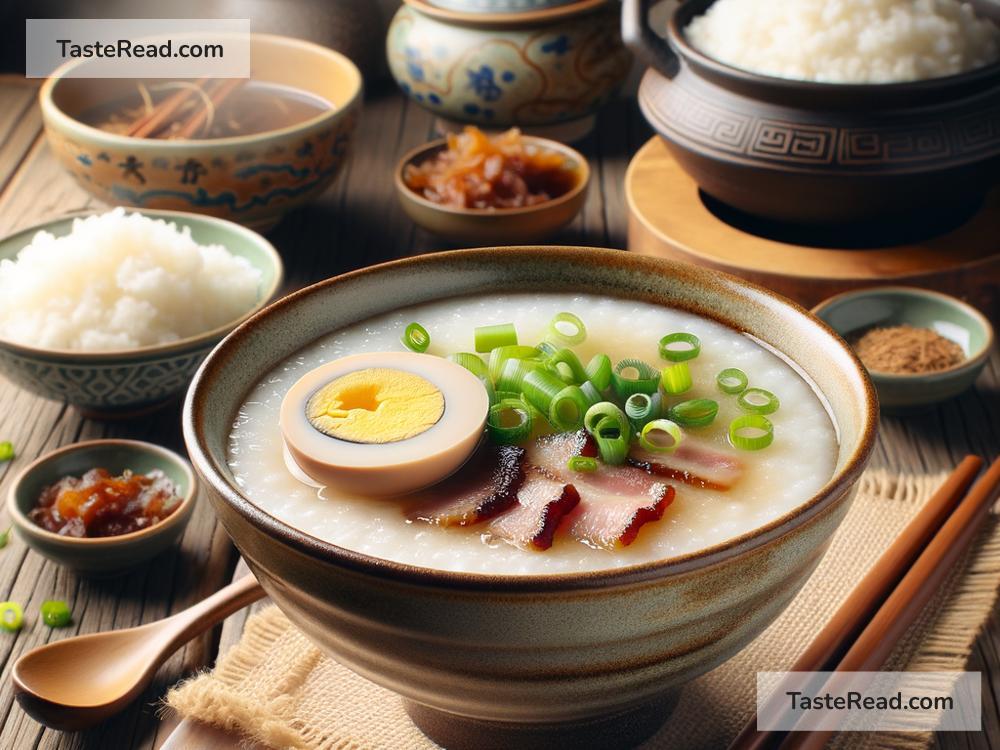Indulging in the Tradition of Boiling Rice for Congee and Soulful Memories in China
Imagine a warm, comforting bowl of rice congee steaming in front of you. It’s simple, yet deeply meaningful. For centuries in China, the act of boiling rice to make silky congee has been more than just cooking; it’s a tradition, a connection to the past, and a way to nourish family bonds. In every corner of China, congee has a story, a memory, and a soul attached to it.
What Is Rice Congee?
Rice congee, known as “zhōu” (粥) in Mandarin, is a humble, slow-cooked porridge made by boiling rice with plenty of water. People add ingredients depending on regional tastes, personal preferences, or family recipes. Some like it plain, while others enrich it with savory toppings like pickled vegetables, shredded pork, century eggs, or herbs. Sweet versions often include red beans, dates, or sugar.
Congee is not flashy or fancy, but that’s precisely why it holds a special place in Chinese hearts. It’s a dish made during quiet mornings, a remedy for sickness, a baby’s first bite of solid food, and often the taste of home for those living far away.
A Tradition of Togetherness
The process of making congee is slow and thoughtful, much like the traditions it represents. Families in China, especially in rural areas, start their day by boiling rice on a low flame, letting time transform it into creamy goodness. The gentle bubbling of the pot, the rhythmic stirring, and the aroma wafting through the kitchen create an atmosphere of calm and warmth.
Congee isn’t just food; it’s a shared experience. Sitting around the table to enjoy hot bowls of congee brings family members together. In these moments, stories are told, laughter is shared, and connections are strengthened. It goes beyond filling stomachs—it fills hearts.
Regional Variations Add Spice to Tradition
China is vast, and every region has its own version of rice congee, each infused with local flavors. The diversity reflects the rich culinary culture of the country.
-
Guangzhou: In Cantonese cuisine, congee is creamy and smooth. It’s often paired with fresh seafood, slivers of ginger, or slices of roast duck.
-
Beijing: The northern style tends to feature hearty additions like millet, sweet potato, or dates, making a more textured and filling porridge.
-
Fujian: Locals enjoy congee with a splash of sweetness using sugar or syrup, while others prefer toppings like peanuts, pork floss, or soy sauce.
-
Chaozhou: In Teochew cuisine, congee is thinner, almost like a soup. It’s served alongside side dishes like salted fish or pickled vegetables.
-
Hangzhou: Lotus seeds and nuts are popular sweet additions in this eastern region, where congee becomes a dessert-like delicacy.
These regional twists make congee an ever-evolving tradition, tailored to the tastes and memories of each province.
Memories Crafted in the Kitchen
For many Chinese people, congee isn’t just a dish—it’s the taste of childhood. It might remind them of their grandmother’s care when they were unwell, gently stirring the pot for hours to help them recover. Or perhaps it’s the memory of winter mornings when they crowded around steaming bowls, warming their hands and hearts.
Parents and elders often pass down congee recipes, adding little personal touches that become family treasures. In some households, the special ingredient may be a pinch of dried scallops, a dash of sesame oil, or a handful of sweet lotus seeds. These traditions live on, turning mealtime into a moment of remembrance.
The Soulful Simplicity of Congee
What makes congee so soulful? Maybe it’s the dish’s simplicity that gives it room to carry so much emotion and meaning. In modern life, where things often move fast, making congee slows us down. The rice must simmer for hours, requiring patience and care. It teaches the value of waiting and appreciating small things—a warm meal, the scent of grains, the comfort of loved ones nearby.
Congee is also there in life’s quiet moments. It’s the food served during times of reflection, be it a funeral gathering or the slow recovery from an illness. Its gentleness lets people feel nurtured during hard times.
Beyond the Bowl: Congee in Modern China
Even in today’s bustling cities with fast food and trendy restaurants, congee remains a staple. It shows up on breakfast tables, hospital trays, and menus in Michelin-starred establishments. Street vendors serve it in the morning to workers rushing to their jobs, while families make it at home for cozy weekends.
For younger generations, congee is a tie to their roots, reminding them of the simplicity and warmth of traditional Chinese cooking. Despite modern convenience, many still prefer making their own congee, sticking to grandma’s recipe or adding their personal twist.
A Tradition Worth Savoring
Rice congee is more than food—it’s a tradition that has cradled generations in China. In its warmth and simplicity lies a connection to family, culture, and memory. Whether enjoyed in a bustling city or a quiet village, each bowl of congee carries a bit of history and a whole lot of heart.
As you savor this timeless dish, you’re taking part in a ritual that brings people closer. The rice, slow-boiled and tender, tells stories of love, patience, and the joy of togetherness. So next time you try congee, savor its soulful simplicity—the taste of China’s shared memories.


